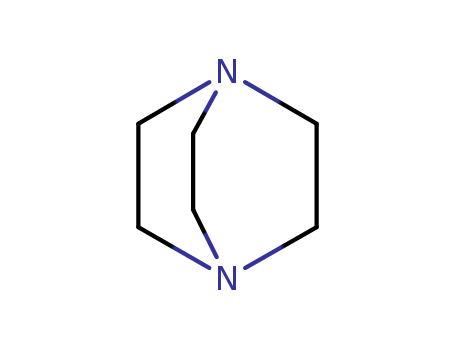10.1016/j.tet.2010.09.009
The study focuses on the application of cationic rhodium(I) complexes with N-phosphino tert-butylsul?namides (PNSO) ligands in catalyzing [2+2+2] cycloaddition reactions. PNSO ligands, which combine sulfur chirality with phosphorous coordinating capacity, are effective in both intra- and intermolecular cycloadditions of enediynes, yielding cyclohexadiene derivatives with moderate enantiomeric excesses. The research also explores the catalyst's performance in mild conditions and short reaction times for the intermolecular cycloaddition of diynes with monoalkynes. The study concludes that PNSO ligands significantly enhance the reaction's efficiency and yield, with potential for further optimization to improve enantioselectivity, highlighting the robustness and broad applicability of the catalytic system.
10.1021/jo502623g
The study presents a novel and efficient method for the reduction of tertiary hydroxyalkylphosphine oxides to the corresponding tertiary hydroxyalkylphosphine-boranes using borane (BH3) as a mild reducing agent. This direct and stereoselective conversion is facilitated by the presence of an α- or β-hydroxy group in the phosphine oxide structure, which enables an intramolecular P≡O···B complexation. The study demonstrates that the reduction of the P≡O bond occurs with complete inversion of configuration at the phosphorus center. The method's mild conditions and high yields make it a valuable approach for the synthesis of organophosphorus compounds, particularly those that are functionalized and/or nonracemic. The research also includes the exploration of the stereochemical course of the reduction and the role of the hydroxyl group in the reduction process, providing insights into the mechanism and potential applications in organic chemistry.
10.1002/ejoc.200901415
The study focuses on the diastereoselective aza-Baylis–Hillman reactions of allenic esters with activated N-sulfonylimines, using DABCO as a catalyst, to synthesize chiral α-allenylamines and 2-azetines. The research explores the reactivity of allenic esters with various N-arylidenebenzenesulfonamides, leading to the formation of optically active products. It was found that the reaction's outcome could be controlled by adjusting the reaction conditions or the electronic properties of the imine reactants. The study also discusses the potential of these synthesized chiral α-allenylamines as building blocks for the synthesis of chiral pyrrolines and pyrroles, as well as the unique reactivity of strained cyclic enamines like 2-azetines. The results include the synthesis of both acyclic and cyclic derivatives, highlighting the versatility of the methodology for constructing molecular frameworks and the generation of functional groups, which aligns with atom economy principles.
10.1016/S0040-4039(00)85279-X
The research aimed to develop a new and general method for synthesizing functionalized dichlorophosphines, which are scarce compounds in the literature, and their subsequent conversion into phosphabenzenes or diazaphospholes through dehydrochlorination and trapping reactions. The study successfully synthesized dichlorophosphines using silyl enol ethers or ketodichlorophosphines as starting materials, with PCl3 or PBr3 as the phosphorus source, and DABCO as the base for dehydrochlorination. The intermediate phosphaalkenes were trapped in situ using dienes or ethyl diazoacetate to form the desired phosphorus heterocycles. The synthesized compounds were characterized by NMR and mass spectrometry, and the article concluded that while the primary adducts could not be isolated, the overall process was successful in yielding the target phosphorus-containing heterocycles.
10.1002/anie.201206927
The research focuses on the development of a new method for the borometalation of terminal alkynes, which is a significant advancement in organic synthesis. The purpose of this study was to create a catalyst-free approach to achieve borometalation using hydroborane and metal complexes, bypassing the need for boryl metal species that are often challenging to access. The researchers utilized frustrated Lewis pairs (FLPs), specifically a combination of HBArF2 and 1,4-diazabicyclo[2.2.2]octane (DABCO), to activate terminal alkynes and induce the formation of alkynylborates. The process led to the synthesis of (Z)-(2-borylalkenyl)gold complexes, which are valuable intermediates for the stereoselective synthesis of trisubstituted alkenes. The study concluded that this method offers a direct and efficient route to borometalation without the need for catalysts or boryl metal complexes, and it demonstrated the potential of these gold complexes in palladium-catalyzed C-C bond formation. The chemicals central to this process include phenylacetylene, HBArF2, DABCO, PPh3AuCl, and various other reagents used in the subsequent palladium-catalyzed coupling reactions.
10.1002/ejoc.201700970
This research aims to improve the efficiency of radiofluorination reactions for the synthesis of PET radiotracers. The study explores the use of quinuclidine and DABCO as additives to enhance the nucleophilic substitution of [18F]fluoride ion in 5-substituted 2-halopyridines, which are challenging precursors due to the presence of a good leaving group. The researchers found that quinuclidine and DABCO significantly increased the yields of [18F]2-fluoropyridines to practically useful levels (>15%) by likely promoting radiofluorination through the reversible formation of quaternary ammonium intermediates. The study also demonstrated that these additives tolerated free aryl amino groups in the precursors and were effective in various 5-substituted 2-halopyridines. The findings suggest that quinuclidine and DABCO can facilitate the rapid screening of homologous candidate PET radiotracers by improving the radiosyntheses of [18F]2-fluoropyridines directly from more readily accessible 2-halopyridyl precursors.
10.1055/s-1997-1372
The study investigates the use of 1,4-diazabicyclo[2.2.2]octane (DABCO) as an efficient reagent in the synthesis of alkyl tosylates and sulfenates. DABCO is found to be a promising substitute for pyridine and triethylamine in these reactions. The substrates, which are various alcohols, are converted into the desired tosylates and sulfenates using DABCO and the respective acid chlorides as reagents. The study provides examples of successful conversions, such as the synthesis of tosylates from neopentyl alcohol and trans-4-tert-butylcyclohexanol, and sulfenates from 2-methylcyclohexanol and other alcohols. The study also explores the use of different solvents, finding that tert-butyl methyl ether (t-BuOMe) and ethyl acetate (EtOAc) are good alternatives to chlorinated solvents like chloroform and dichloromethane. The study concludes that DABCO is a convenient, colorless, crystalline base that can be easily purified and dried by sublimation, making it a practical choice for these types of organic synthesis reactions.




 Xn,
Xn,  F
F

